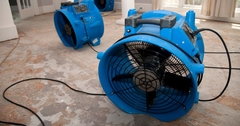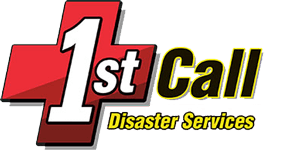Blog Post
Dealing with Sewage Cleanup: Hazards, Procedures, and Safety Measures

Sewage cleanup is not only a messy and unpleasant task but also a potentially hazardous one. Whether caused by a sewer backup, a broken pipe, or a flooded basement, sewage spills can pose significant health risks and require prompt and thorough cleanup to mitigate the spread of contaminants and prevent further damage to property. In this blog post, we'll explore the hazards associated with sewage cleanup, the procedures involved, and the safety measures homeowners should take to protect themselves and their families.
Understanding the Hazards of Sewage Cleanup
Sewage, also known as wastewater or black water, contains a variety of contaminants, including bacteria, viruses, parasites, and toxic chemicals. Exposure to sewage can lead to a range of health problems, including gastrointestinal illnesses, skin infections, respiratory issues, and even serious diseases such as hepatitis and cholera. In addition to health risks, sewage spills can cause structural damage to buildings, flooring, and personal belongings if not addressed promptly.
Procedures for Sewage Cleanup
Assessment and Safety Precautions: Before beginning cleanup efforts, assess the extent of the sewage spill and identify potential hazards such as electrical outlets, appliances, and structural damage. Wear appropriate personal protective equipment (PPE), including gloves, goggles, and masks, to protect yourself from exposure to sewage and contaminants.
Containment and Removal: Establish containment barriers to prevent sewage from spreading to unaffected areas of the home. Use absorbent materials such as towels, rags, or disposable wipes to soak up standing sewage and remove excess water from the affected area.
Disinfection and Cleaning: Thoroughly clean and disinfect all surfaces, materials, and belongings that come into contact with sewage using a mixture of bleach and water or commercial disinfectants. Dispose of contaminated items, including carpeting, drywall, and furniture, that cannot be adequately cleaned or salvaged.
Drying and Dehumidification: Use fans, dehumidifiers, and ventilation systems to dry out the affected area and prevent mold growth. Monitor humidity levels regularly and ensure proper airflow to facilitate drying and evaporation of moisture.
Repair and Restoration: Once the cleanup process is complete, assess and repair any structural damage to plumbing, flooring, walls, and electrical systems. Replace damaged materials and surfaces as needed to restore the home to its pre-loss condition.
Safety Measures for Sewage Cleanup
Avoid Direct Contact: Minimize direct contact with sewage and contaminated materials to reduce the risk of exposure to harmful pathogens and contaminants. Wear protective clothing, gloves, and footwear when handling sewage and cleanup materials.
Practice Proper Hygiene: Wash hands thoroughly with soap and water after handling sewage or contaminated items. Avoid touching your face, mouth, or eyes while performing cleanup tasks to prevent the ingestion or inhalation of harmful bacteria and viruses.
Ventilation and Air Quality: Maintain adequate ventilation and airflow during sewage cleanup to minimize exposure to foul odors and airborne contaminants. Use exhaust fans, open windows, and air purifiers to improve indoor air quality and remove harmful particles and gases.
Dispose of Waste Properly: Dispose of contaminated materials, sewage-soaked items, and cleaning supplies in sealed plastic bags or containers to prevent the spread of contaminants and protect sanitation workers. Follow local regulations and guidelines for proper disposal of hazardous waste.
Seek Professional Help: In cases of extensive sewage spills, structural damage, or persistent odors, seek professional assistance from certified restoration companies or water damage specialists. Professional cleaners have the expertise, equipment, and experience to safely and effectively clean up sewage spills and restore your home to a safe and sanitary condition.
Sewage cleanup is a challenging and potentially hazardous task that requires careful planning, proper equipment, and adherence to safety protocols. By understanding the hazards associated with sewage spills, following established procedures for cleanup and restoration, and taking appropriate safety measures, homeowners can minimize risks to health and property and ensure a safe and thorough cleanup process. In cases of severe sewage spills or extensive damage, don't hesitate to seek professional assistance from certified restoration professionals to ensure the safety and well-being of your home and family. Remember, prompt action and thorough cleanup are essential to mitigating the risks associated with sewage contamination and restoring your home to a clean, safe, and healthy environment.
